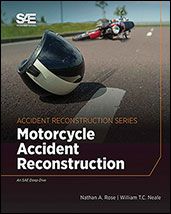Technical Paper
Video Based Simulation of Daytime and Nighttime Rain Affecting Driver Visibility
2021-04-06
2021-01-0854
This paper presents a methodology for generating video realistic computer simulated rain, and the effect rain has on driver visibility. Rain was considered under three different rain rates, light, moderate and heavy, and in nighttime and daytime conditions. The techniques and methodologies presented in this publication rely on techniques of video tracking and projection mapping that have been previous published. Neale et al. [2004, 2016], showed how processes of video tracking can convert two-dimensional image data from video images into three-dimensional scaled computer-generated environments. Further, Neale et al. [2013,2016] demonstrated that video projection mapping, when combined with video tracking, enables the production of video realistic simulated environments, where videographic and photographic baseline footage is combined with three-dimensional computer geometry.

